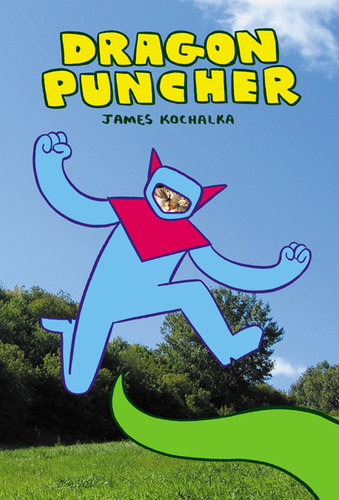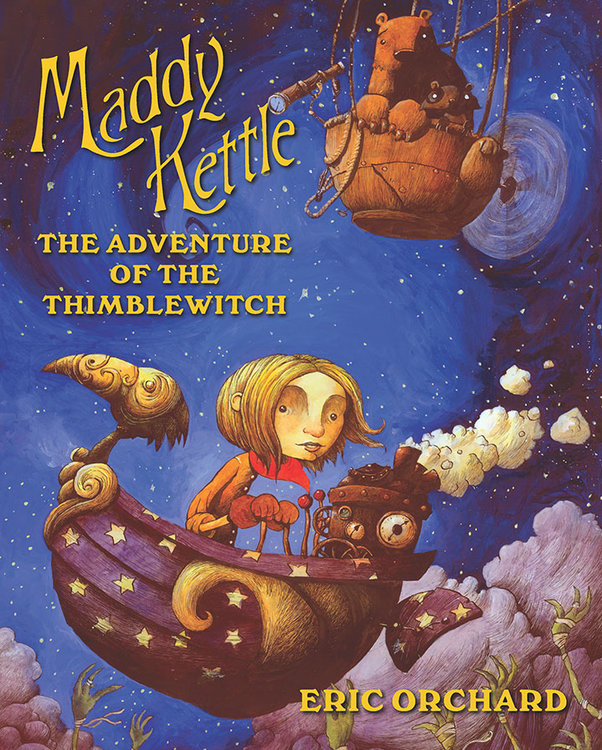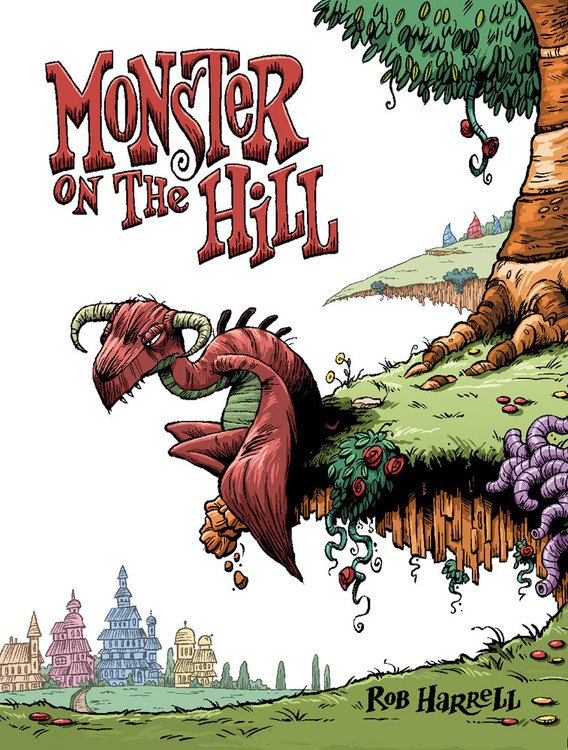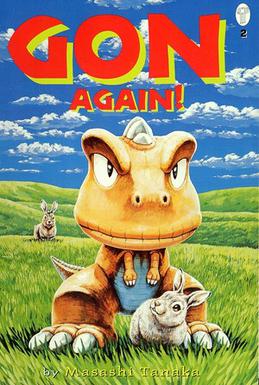July 17, 2015
When I Was a Kid…
I have, admittedly, been trying to turn my kids into nerds since slightly before they were born. Comics and graphic novels have been part of our bedtime routine since before they were age-appropriate, and there was a mushy time a year or so ago where it looked like my intentions had backfired and the elder child was having nightmares about Bone‘s rat creatures. (I am not the world’s best mom – maybe only second or third best.)
But this year, all of those sewn seeds have taken root and flowered in a most spectacular way. It helps that the comic market for the under-ten set has exploded. It also helps that some of the best and brightest comic creators in the world are trying their hands at children’s picture books with wonderful results. Even mega-best-selling and award-winning children’s book franchises like Mo Willem’s Piggie and Gerald books are essentially gateways into comics. You’d have to be childless under a rock not to be swept into – well, not just comics, but excellent comics.

M&O love, LOVE James Kochalka’s Dragon Puncher books.
I brought my two daughters – now 7 and 4 – to the Toronto Comics Arts Festival this year, where for the first time they led the way. They spent every penny of their own hard-earned money on books, sketches, bookmarks and buttons. We still have books on the shelf we haven’t tried yet, distracted, as they are, by their favourites.
I’ve learned a lot. #1 thing is that what I like and what they like are two very different things. This sometimes leads to fights at storytime, power struggles over whether we’re going to read Moomintrolls or whether I have to drag myself through Power Ponies again. Nevertheless we agree on a number of gems, a lot of them new, so I’ve assembled a little roundup below.
 Dragon Puncher by James Kochalka
Dragon Puncher by James Kochalka
Kid’s Rating – 5 stars
Mom’s Rating – 5 stars
These are short, simple and thoroughly tongue-in-cheek comics about the titular hero (played by Kochalka’s cat, Spandy) and her self-appointed sidekick, Spoony-E (played by Kochalka’s son.) I was reluctant to buy them because they didn’t seem to have much substance to them, but they are hilarious. Good old slapstick, absurd premises taken seriously, and innocent fun make this pretty much the ideal small-child indie.
Kid’s Rating – 3 stars
Mom’s Rating – 4 stars
I wanted to like this one. A high-fantasy adventure starring a stubborn, resourceful girl of colour with a pet dragon and a mission to save her sisters? Sign me up!
And it is amusing – for me. The kids? Well, the younger one liked the dragons and action. But most of it went right over their heads. Princeless draws a lot of its humour from subverting existing Disney/comic/fantasy tropes about the roles of women and princesses – tropes my kids know nothing about. The idea that a princess needs a prince to come save her? Yup, my kids heard it first here. It’s possible that kids better-acquainted with Disney will get the jokes, but mine were just lost.
 Maddy Kettle: The Adventure of the Thimblewitch by Eric Orchard
Maddy Kettle: The Adventure of the Thimblewitch by Eric Orchard
Kid’s Rating – 4 stars
Mom’s Rating – 3.5 stars
This is a beautiful book. So beautiful that my kids refused to read it for the first few months because the strange creatures and eerie setting were “scary.” I was enchanted and eventually just started reading it myself, and, like cats, my children wound up on my lap reading along. They loved it.
But a few pages in, I found myself frustrated with the storytelling. The plot moves too fast and there isn’t a lot of character-building. My kids didn’t care. The images and ideas were perfectly-paced for them. I can see how this book has captured their imaginations, even if I felt it could have been written better. A surprise little-kid hit.
Kid’s Rating – 5 stars
Mom’s Rating – 3 stars
Strip-style comics about a group of friends doing pretty ordinary things. These are funny, I guess – funnier to the kids than me. I found the comic a bit mean. The characters are all sort of jerks to each other. My kids don’t care. They think these are hilarious. The friends never seem to really hold any grudges and they do all kinds of interesting things together… so I guess I should chill out about their jerkiness. Maybe that’s just “real.” Anyway, I’m torn on this one. The kids love it but the interactions leave a bad taste in my mouth.
 Monster on the Hill by Rob Harrell
Monster on the Hill by Rob Harrell
Kid’s Rating – 5 stars
Mom’s Rating – 4.5 stars
This was an unexpected hit. This is the story of a “lame” monster who lacks the self confidence to monster properly. The town he is meant to be terrorizing is pretty disappointed in him and send up a doctor to “fix” him. Adventures ensue.
Author Rob Harrell is probably better known for having inherited the abjectly terrible daily syndicated strip, Adam @ Home, which immediately put me at my guard. But the art in Monster is so lush and the world so fantastically fun that my reservations were swept away. The humour is occasionally pretty lame in a way that was over the kids’ head, but it didn’t distract too badly. My only major complaint is the total lack of any female characters at all. The kids have no complaints and have read this thing into the ground.
Kid’s Rating – 4 stars
Mom’s Rating – 3 stars
Gon is a wordless comic (like Andy Runton’s popular Owly) about a baby dinosaur in our own world, living in various biomes and befriending and/or terrorizing the animals there. My elder child, obsessed with nature and animals, loves these to pieces. They are gorgeously-drawn and expressive, featuring lots of really interesting real-life animals we never see.
On the other hand, I find wordless comics – even Owly – exhausting to “read” to the kids. These are dramatic performances, not readings. I look forward to my kids being willing to sit alone with these, rather than wanting my involvement.
 My Little Pony by various committees
My Little Pony by various committees
Kid’s Rating – 4+ stars
Mom’s Rating – 3-4 stars
Okay, not exactly high literature, here. But it would be misleading for me to suggest my kids are reading all these great books without owning up to the fact that we have read 10+ volumes of pony comics to pieces over the last two years. They love them. They can’t get enough of them. They rush to the pony shelf first thing when we get to the comic shop. Le sigh.
But, okay, as far as mainstream brands go, MLP is really not bad. The “mane six” ponies are well-developed, strong, interesting characters with relatable strengths and weaknesses. They go on incredibly epic adventures of every conceivable kind. The comics give more nods to adult readers than the cartoons do – they are probably written for the adult fan base, not younger kids. Lots of visual geek gags including some incredibly meta Discord/Q (from Star Trek) jokes. MLP’s major weakness is a big racial blind spot (yah yah, the ponies are a rainbow of colours. But they are also all white. Zecora the Magic Negro Pony is a zebra and there are indigenous bison. The clear implication is that ponies are white, white, white.) Later seasons of the cartoon have tried to de-white the state of ponyness, but it’s still pretty lame.
But wait, there’s more! A lot more. If you’ve fallen out of touch with comics and think Marvel/DC is all there is to offer, I really recommend you get yourself to a comic book shop – any comic book shop – with haste. I’ve barely scratched the surface of what we have on my kids’ bedstand here, let alone what is available in stores. Some of the most imaginative work in any genre is being done in this medium, in my humble opinion. It’s worth catching up.
June 29, 2015
Every day I’m publishin’
June 2015: I have to remember this month. It has been a serious banner month for me as a writer, and I’m only just beginning to really digest it all!
I’ve had two stories published!

 The second, “The Posthuman Condition,” is in the Summer 2015 issue of Kaleidotrope. This is the story of Jesse, an unpaid intern at a transhumanist nightclub, having the worst night of her life. It lands somewhere between splatter horror and cyberpunk with a dose of myth thrown in. TW: suicides. “The God of Post-Man: Who Chooses the Posthuman Condition? A Folly by Jesse Bauman. And Friends.”
The second, “The Posthuman Condition,” is in the Summer 2015 issue of Kaleidotrope. This is the story of Jesse, an unpaid intern at a transhumanist nightclub, having the worst night of her life. It lands somewhere between splatter horror and cyberpunk with a dose of myth thrown in. TW: suicides. “The God of Post-Man: Who Chooses the Posthuman Condition? A Folly by Jesse Bauman. And Friends.”
I’ve also sold three short stories this month!
I have sold my alt-history Revolutionary-era Quebec novelette, “More Heat Than Light,” to The Magazine of Fantasy & Science Fiction. This will be my second appearance in F&SF and I’m OVER THE MOON about it. Publication date unconfirmed, but possibly early 2016.
I sold another alt-history, “Eleusinian Mysteries,” to Luna Station Quarterly.This is the story of a Javanese-Dutch mapmaker who discovers a map of a city on the moon, and a secret Dutch East India Company plan to travel there. Publication date September 2015.
The third sale is still a secret, but I hope the TOC will be announced soon! I like having announcements. This is a thing I could serious get used to…
March 31, 2015
Interview @ the F&SF Blog!
The F&SF blog has posted an interview with me about my piece “La Heron”. This one was really fun to answer and gave me a chance to rant a little about women in martial cultures, high vs low literature, the total plausibility of brawling nuns, and so on. Anything pique your interest? Comment here or there! I like discussions.
March 25, 2015
Mind Meld!
Over at SF Signal, me and about a hundred other people gave up our thoughts on our favourite (recent) short fiction! It’s a big article, but the key is to look for those stories and writers who merited multiple recommendations…
March 19, 2015
Ad Astra 2015!
I will be at Ad Astra Toronto next month – April 10th-12th 2015 – participating as much as I could possibly manage to participate, so as to maximize the fun I will get out of this, the rare convention I am actually able to attend.
My panel and reading schedule is as follows:
Deconstruction: What Happens When You Take Tropes Apart
Friday, April 10th, 7:00 PM – 8:00 PM
Panellists: Gail Z. Martin, KW Ramsey, Leah Bobet, Me
Genre fiction thrives on tropes, from the stalwart hero, the damsel into distress, and all the way to the nefarious villain, but what happens when a show takes those tropes and turns them on their head. Join us as we discuss how and why to do this and examine when it’s done right and when it’s done wrong.
Giving It Away For Free: But You’ll Get Great Exposure!
Saturday, April 11th, 10:00 AM – 11:00 AM
Panellists: Chantal Parent, Chris Warrilow, Erik Mohr, Me
“I’ve got a cousin who could do that for peanuts, why should I pay you so much?” Sound Familiar? Advice and anecdotes from professionals who have been treated unprofessionally.
Genre Crossing: Please Watch for Slow Moving Pathetic Fallacies
Saturday, April 11th, 12:00 PM – 1:00 PM
Panellists: Ada Hoffmann, Karina Sumner-Smith, Nancy Kilpatrick, Me
Sometimes you just want to read, write or direct a paranormal romance during the robot uprising on the medieval planet of urban fariy hipsters.
New Toronto/Ontario Writers Reading
Saturday, April 11th, 1:00 PM – 2:00 PM
Panellists: Elaine Chen, Malon Edwards, Tonya Liburd, Me
Four up-and-coming Toronto writers will be reading from their newly-published work.
How to Sell SF to General Readers as Literature
Saturday, April 11th, 4:00 PM – 5:00 PM
Panellists: Derek Kunsken, Erik Mohr, Leah Bobet, Me
It is nearly impossible to get a non-genre reader to even look at a book – much less read it – unless HBO has kidnapped it for a mini-series. So how do you prove that SF/F is more than pulpy star-ships and elves with perfect hair?
Interactive Fiction: No Coding required!
Sunday, April 12th, 12:00 PM – 1:00 PM
Panellists: Alice Black, Leah Bobet, Matthew Johnson, Me
Thanks to tools like Storium and Twine, the ability to make interactive stories is now available to everyone. Find out how to get started without having to write a single line of code.
Intersection Between SF and Contemporary Issues
Sunday, April 12th, 4:00 PM – 5:00 PM
Panellists: Adam Shaftoe, Cathy Hird, Derek Newman Stilles, Me
Panelists discuss SF stories that take on problems of the present, and old SF that has incidentally come back around to address what ails society today.
And just a reminder that I am that rare thing – an extroverted writer – so don’t be shy about coming to talk to me at the Con! As you can see, I like conversation.
February 25, 2015
La Héron Free on Amazon!
 Today’s best news ever? My swashbuckling historical fantasy, “La Héron”, just went up on Amazon! So while I encourage you strongly to subscribe to F&SF in print (because it is awesome,) or seek out the issue in your local book or magazine store (then take a picture and send it to me!) – you can also download it as a Kindle Digest edition for free from Amazon right here.
Today’s best news ever? My swashbuckling historical fantasy, “La Héron”, just went up on Amazon! So while I encourage you strongly to subscribe to F&SF in print (because it is awesome,) or seek out the issue in your local book or magazine store (then take a picture and send it to me!) – you can also download it as a Kindle Digest edition for free from Amazon right here.
The come back here and let me know what you thought, yes? 😉
January 13, 2015
Hug a Critic (Or Nominate them for an Award)
A lot of ink has been spilled, by me as much as anyone, about the genre ghetto. The mainstream publishing industry pointedly ignores genre in all those spaces it considers respectable, like newspaper reviews, literary awards, and adult conversations. Meanwhile, genre fandom often resists analysis and criticism from mainstream culture, insisting that their corner of literature has its own rules and standards that a “non-fan” can’t understand merely by reading a genre book. There are a lot of shots lobbed about high culture and low, the people versus the establishment, fans versus experts.
And yet there is more self-aware crossover now between literary fiction and genre fiction than there has ever been, in the short fiction markets in particular. The golden age of pulps might have passed on, but in its place is an incredibly fecund culture of online literary ‘zines with expressly speculative mandates. When I stopped reading fantasy fiction fifteen years ago, we were still in the age of Locus, Asimov’s, and Realms of Fantasy. When I returned a couple of years ago, most of these glossies were dead, but the internet was teeming with stranger things, more experimental things. The internet had this effect on everybody over that fifteen-year period: anybody can publish anything, so they do. Fringe projects abound, but there’s a difference in SpecFic:
It pays.
Literary SpecFic isn’t the fringe. It’s an increasingly sustainable share of the short fiction market with a demanding, critical audience willing to pay for the product. In no small part because of the precedent set by the pay rates of the old pulps (and the writer’s unions that sprang up around them,) literary short fiction markets with genre flavours now pay more and more reliably than most “mainstream” literary markets, a distinction you can see in the talent they attract. (These inroads have been less marked in novel-length works: there, a literary SpecFic work is still likely to be marketed and branded as “literary”, downplaying the genre aspects of the work.)
The overtly hybrid form is being led by short fiction. SpecFic short fiction is good. It is important. And it is all but invisible to the mainstream.
A year ago, there was a lot of talk on Twitter about a need for more serious criticism of this fiction. Not only is there more material being released than your average reader can sort through, but much of it is complex material that benefits from a close read. Critics help to sort and decode, to lead the conversation.
There were (and are) some phenomenal critical sources, like Strange Horizons and The Cascadia Subduction Zone, but these focused primarily on full-length works, including anthologies. Other places – Tangent Online, Fantasy Literature, and Locus Online – covered short fiction in brief; overviews without much analysis. There was a need for regular, ongoing, critical coverage of the wealth of material coming out of the periodicals.
As it turns out, there was a need for a lot of regular, ongoing critical coverage of this material. Once the spores took root, short fiction review columns popped up like mushrooms in October. I like to think of 2014 as the beginning of a new critical era in genre fiction. Now we have Amal El-Mohtar’s Rich and Strange up at Tor.com, K. Tempest Bradford covers short fiction at io9. Fantastic Stories of the Imagination has Gillian Daniels and just a couple of months ago, Nerds of a Feather started a “Taster’s Guide” to a flight of interesting short fiction each month.
And, of course, I have maintained Clavis Aurea now for over a year.
In a recent Twitter discussion about award eligibility, Niall Harrison (Strange Horizon‘s editorial force) pointed out that while critics are technically eligible for the Hugo Awards’ Best Fan Writer, “…it’s a poor fit and almost never happens.” Individual essays occasionally get nods (such as last year’s winner, “We Have Always Fought” by Kameron Hurley,) but it is hard to define a critic’s body of work as a whole. You could perhaps nominate their blog or a single, standout column. Critics have not, historically, had their own brands the same way fiction writers do.
I believe this year is different. The same ‘zines who have raised the bar for quality SpecFic short fiction are housing and branding critics with definable, nominate-able bodies of critical work.
I would love to see this trend recognized in this year’s awards season. Literary criticism in genre isn’t new, but it is newly normalized. There is a new critical culture. We’re showing that genre isn’t a ghetto: it’s a metropolis.
You are eligible to nominate for the 2015 Hugo Awards if you were a member of Loncon 3, a member of Sasquan, or the 2016 Worldcon, MidAmericon 2. The nomination period opens January 31, 2015. You will be able to nominate up to five people or works in each category.
Critics and their works are generally eligible for both Best Fan Writer and Best Related Work. You could nominate the critic (say, Amal El-Mohtar) as Fan Writer, and their column or blog (say, Rich and Strange) for Best Related Work.
Let me rephrase that. You should nominate a critic for Best Fan Writer, and their body of work for Best Related Work. I hope very much that you will consider nominating me and my column, Clavis Aurea.
Critics are a vital part of the literary landscape and they work hard. As literary SpecFic continues to push boundaries, reach new audiences, and gain new respectability, these critics will have had no small part in the shaping of the genre. That’s a role that deserves to be recognized on the ballot.
Hug a critic!
***
Next week, I’ll be laying out my own choices for the categories I intend to nominate in! Stay tuned!
January 5, 2015
New Year, New Adventures!
 I have a certain fondness for backlists. I like to push back, as much as possible, against the trend towards literature as ephemera. It is sad when a book fails to outlive its author. It is sadder still when it is consigned to the blue bin if it fails to take off in its first year of life. The saddest of all, in my opinion, is the $0.99 ebook, designed to be read and deleted, leaving not even a dusty volume behind as artifact. If a book was worth reading ten years ago, it should be worth reading today.
I have a certain fondness for backlists. I like to push back, as much as possible, against the trend towards literature as ephemera. It is sad when a book fails to outlive its author. It is sadder still when it is consigned to the blue bin if it fails to take off in its first year of life. The saddest of all, in my opinion, is the $0.99 ebook, designed to be read and deleted, leaving not even a dusty volume behind as artifact. If a book was worth reading ten years ago, it should be worth reading today.
For the same reason, I love the idea of reprints. Great stories should be remembered, read again, and re-introduced to new readers. Short fiction writers should see the same long tail for their work that mid-career novelists might. Old stories gain new meaning in recent contexts, if we can only spare the time to look back.
I am terribly pleased, then, that Apex Magazine has asked me to be their new (and first) Reprints Editor! Once per month, I’ll have the chance to find and dust off an older gem for inclusion in their subscriber edition. I will still be contributing Clavis Aurea, my short story review column, to these issues, so now you have two good Charlotte-related reasons to go subscribe, if you haven’t already.
Not a bad way for me to start 2015! I have a shiny, warm feeling about this year!
December 30, 2014
New Year’s Resolutions 2015
I know New Year’s resolutions are bunk. Why not make a resolution on April 4th? Why not yesterday? Better yourself all the time, self! You don’t need an arbitrary calendar date to do it!
And yet there is something in the tradition that is more effective than a spontaneous declaration of intent, the way a cup of tea somehow tastes better on a snowy evening. A year is always longer than I think it is, and when I allow myself to go back and open the time-capsule that was last year’s resolutions, I am always pleased to see how much more I have accomplished than I thought. So I will make them, so I will look back on them.
This year’s resolutions were staring me in the face anyway. After reflecting on 2014, it is clear what I need to do in 2015.
Write More
Although 2014 was a banner year in sales & exposure for me, I didn’t actually write much more to tide me over into 2015. I completed three short stories, one of which is already spoken for. Of the remaining two, one is a very long short – almost a novelette. This will be a hard sell. If I want to publish more work in 2015, I need to write more.
In 2015, I want to write one short story per non-hectic month. I will round it off to 10 stories. In number terms, I’d like this to represent about 5,000 words a month, or 60,000 for the year – double what I wrote in 2014.
Read More
I have been bellyaching about the need to read more here since 2010. Back then, I lamented falling short of a goal of 50 books a year. Oh my God. I would kill to read 50 books a year now. Last year I read fewer than 10 novels – though I read hundreds of short stories. This doesn’t help me keep up with the lit scenes, it doesn’t help me critically, and it doesn’t help me as a bookseller. I need to read more.
This year I will set the target at a modest 12 novels for the year – one per month. Surely I can read 12 novels in a year.
Focus
I feel so busy. I have freelance obligations, editing clients, a short story contest to run and non-profits to volunteer with. Oh, and a full-time job and two young children. How on earth am I supposed to ramp up my writing and reading?
I love the internet, I really do. And for someone like me, who has trouble navigating real-life social situations, social media is critically important to my mental health. But there is truly no good reason I should have to check Submission Grinder twenty times per day. Or be unable to close all the tabs for a solid, focused hour. Or have all my Dragonvale notifications come up as push alerts. *ahem*
In concrete terms, I resolve in 2015 to spend at least one uninterrupted hour a day disconnected. Close the tabs, put the phone in a drawer, write or read. More than one hour a day would be brilliant – but I don’t want to make promises I may be unable to keep. Let’s shoot for an hour.
That’s it. The key to achieving your goals is to set achievable goals, right? Go forth into 2015, self. You can do this.
December 23, 2014
2014 by the Numbers (or: The Airing of Grievances)
I love to hear about publishing progress. To be honest, it makes me feel 300% better about every bloody nose and concussion I get knocking my head against publishing’s thick stone walls. Nobody writes perfect, publishable material every single time – so we’re told. It helps me to see in concrete terms how often a respected author is rejected, how often they have to revise, and how often they have to put a piece into a runed iron box, bury it, salt the land, and move away. It helps to know you can face a lot of failure and still see respectable success afterwards.
I am only in my second year of submitting stories, but I want to share my numbers anyway. Compare and feel stronger, my lovelies. It takes a lot of swings – and a lot of misses – to finally hit.
In 2014 I submitted a dozen or so short stories 76 times to magazines, websites, or anthologies. 45 of them were form-rejected, but another 26 merited very nice, encouraging rejections.
Two of my favourite pieces are now on their 14th and 16th submissions. They’ve changed a lot from the first, but I still love them even if nobody else does – yet.
My newest piece is only on its 3rd submission. The piece before that – ‘La Héron’ – was sold on its 6th try to a venue who had rejected it two months earlier. I like to think this shows improvement in my writing.
I sold 4 stories in 2014. 1 of these was sold at pro (according to the SFWA) rates. Another was for semi-pro. Both were ten-fold or more improvements on my previous best sale.
In 2014, I had 3 stories published. My daughter told her friends at school I was a “famous author” and took one of my anthologies for show & share to prove it. My first true fan! I participated in my first panel at the Toronto Public Library and gave my first interview where I only lied a couple of times.
My reviews not only appeared in Apex Magazine on a bi-weekly basis, but in Canada’s biggest national literary review, the Quill & Quire. I participated in some literary list-making over at the 49th Shelf and a round-table on Con-going at SFSignal.
As if that wasn’t enough, I also edited novels, novellas, and short stories, a cookbook and a boardgame manual for a dozen clients. I threw myself into a very intensive short story workshop with Mary Robinette Kowal. I participated in a 6-week “Artsy Games Incubator” for writers with the Hand Eye Society and published my first piece of interactive fiction, Utopia. I took over as Contest Administrator for the Friends of the Merril Short Story Contest. I even edited a volume of short stories for charity, Chamber of Music.
2014 has been an incredible year of firsts for me. 2015 will, hopefully, be the year I solidify my ground. Where does this path go? I have no idea! But I’m on it, so I’ll find out and let you know when I do.
Oh, and one last thing: I finally set up a Page on Facebook for my writerly doings. Drop in and throw me a like! There’s no communication like two-way communication!
Onwards to 2015!




